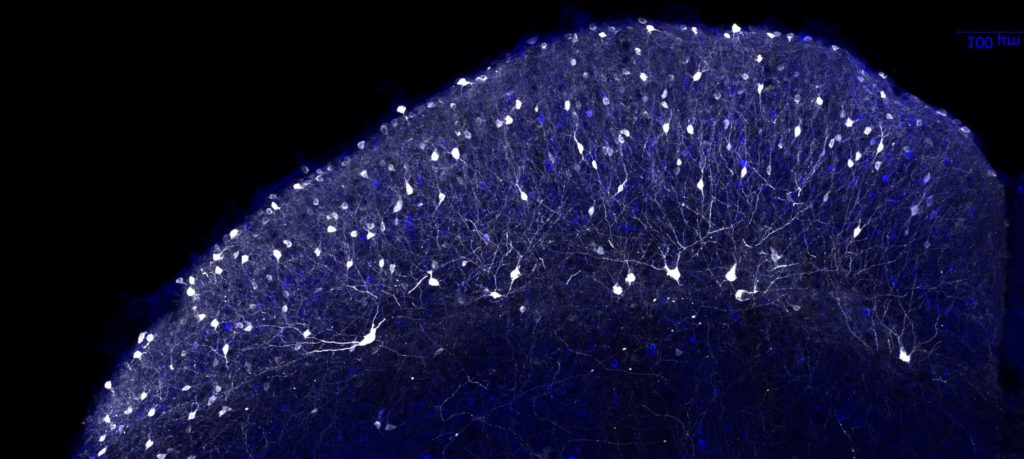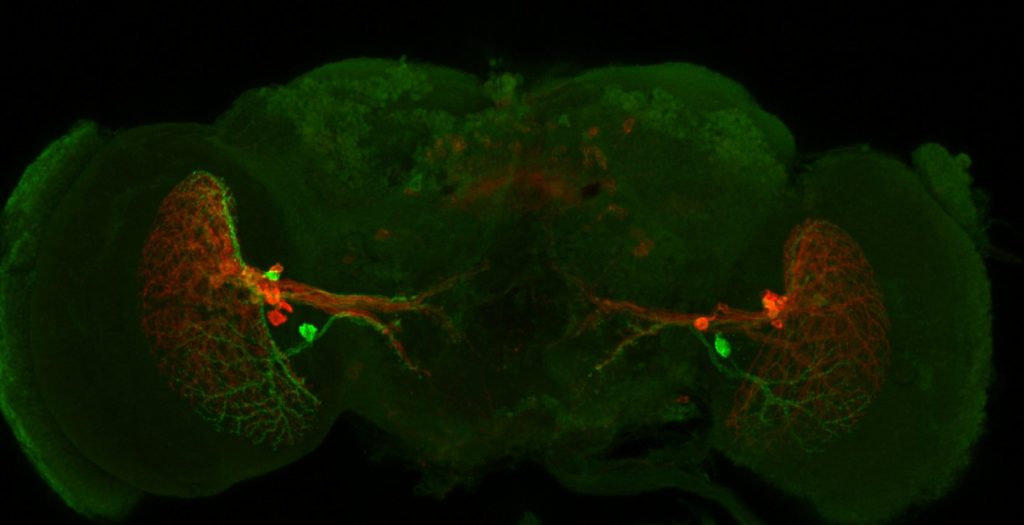
Our group studies the neuronal basis of innate behaviors, i.e. the processes implemented by neuronal circuits to transform sensory information into motor commands. Using a combination of molecular and physiological approaches, we monitor brain activity during animal behavior to reveal the principles and motifs of neuronal computation.
Two different model organisms, the mouse and the fruit fly (Drosophila melanogaster), are being used in parallel to take advantage of their unique strengths and gather a general, across phyla understanding of computational principles. Experiments in the mouse will allow the group to study the mechanisms used by the nervous system to send behaviorally relevant information from the eye to the brain, e.g., to easily detect a red apple in the green foliage. By conducting experiments in the fly, our group intends to obtain a comprehensive understanding of the molecular, anatomical, and physiological instructions conveyed by a highly defined circuit involved in course control. This is possible because neuronal circuits in the fly brain are highly stereotyped, allowing high throughput screenings of the behavioral role of identified cells.
